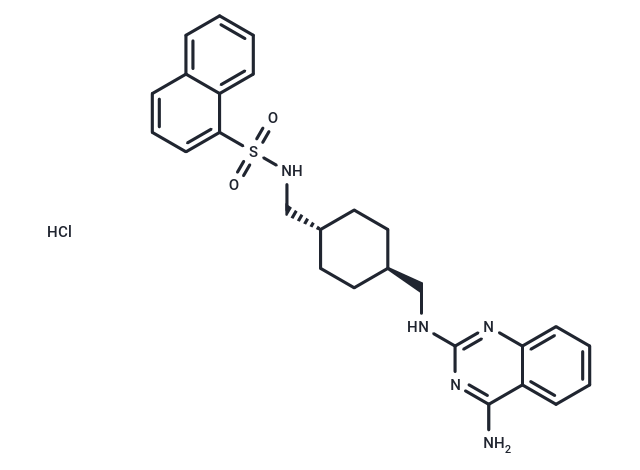Shopping Cart
- Remove All
 Your shopping cart is currently empty
Your shopping cart is currently empty

CGP71683 hydrochloride (CGP71683A) is a competitive neuropeptide Y5 receptor antagonist (Ki: 1.3 nM) and shows no obvious activity at Y1 receptor (Ki >4000 nM) and Y2 receptor (Ki: 200 nM) in cell membranes.

| Pack Size | Price | Availability | Quantity |
|---|---|---|---|
| 1 mg | $46 | In Stock | |
| 5 mg | $107 | In Stock | |
| 10 mg | $162 | In Stock | |
| 25 mg | $269 | In Stock | |
| 50 mg | $388 | In Stock | |
| 100 mg | $568 | In Stock | |
| 1 mL x 10 mM (in DMSO) | $119 | In Stock |
| Description | CGP71683 hydrochloride (CGP71683A) is a competitive neuropeptide Y5 receptor antagonist (Ki: 1.3 nM) and shows no obvious activity at Y1 receptor (Ki >4000 nM) and Y2 receptor (Ki: 200 nM) in cell membranes. |
| Targets&IC50 | Y1 receptor:>4000 nM (Ki), Y5 receptor:1.3 nM (Ki), Y2 receptor:200 nM (Ki) |
| In vivo | CGP71683 (1-10 mg/kg, i.p.) dose-dependently decreased nocturnal and fasting-induced food intake. CGP71683A did not have an anxiogenic-like effect in the rat social interaction test. In the open-field test, carried out immediately after the elevated plus-maze test, CGP71683A inhibited horizontal and vertical activity [2]. |
| Alias | CGP71683A |
| Molecular Weight | 512.07 |
| Formula | C26H30ClN5O2S |
| Cas No. | 192322-50-2 |
| Smiles | Cl.Nc1nc(NC[C@H]2CC[C@H](CNS(=O)(=O)c3cccc4ccccc34)CC2)nc2ccccc12 |
| Relative Density. | no data available |
| Storage | Powder: -20°C for 3 years | In solvent: -80°C for 1 year | Shipping with blue ice. | ||||||||||||||||||||||||||||||||||||||||
| Solubility Information | DMSO: 120 mg/mL (234.34 mM), Sonication is recommended. H2O: 10 mg/mL (19.53 mM), Sonication is recommended. | ||||||||||||||||||||||||||||||||||||||||
Solution Preparation Table | |||||||||||||||||||||||||||||||||||||||||
H2O/DMSO
DMSO
| |||||||||||||||||||||||||||||||||||||||||

Copyright © 2015-2025 TargetMol Chemicals Inc. All Rights Reserved.